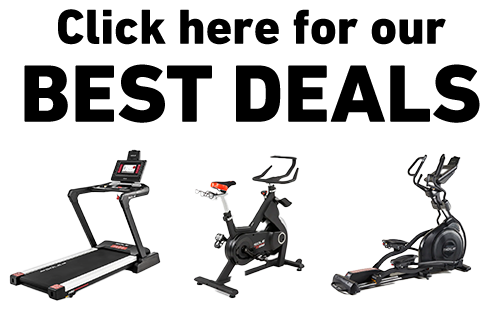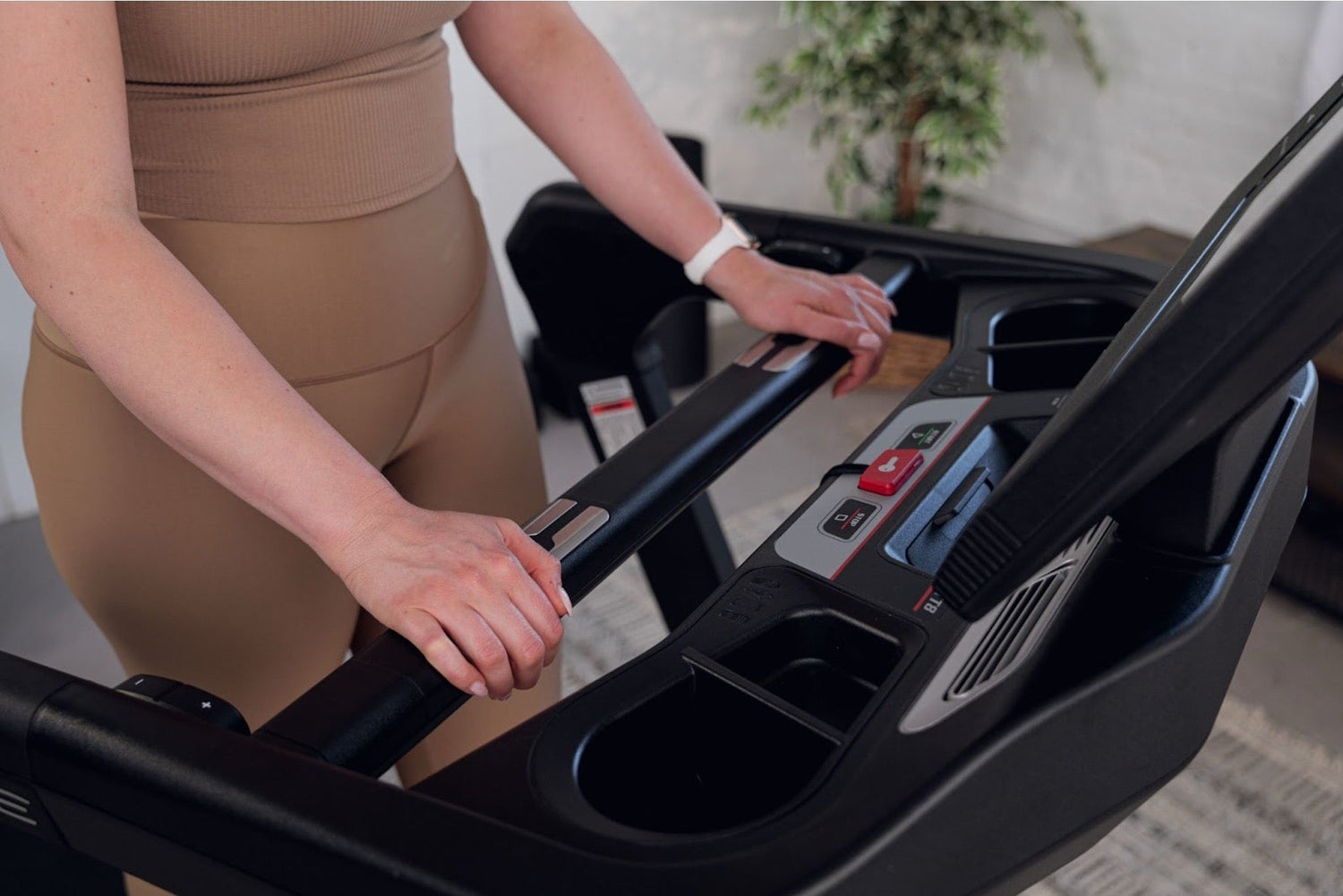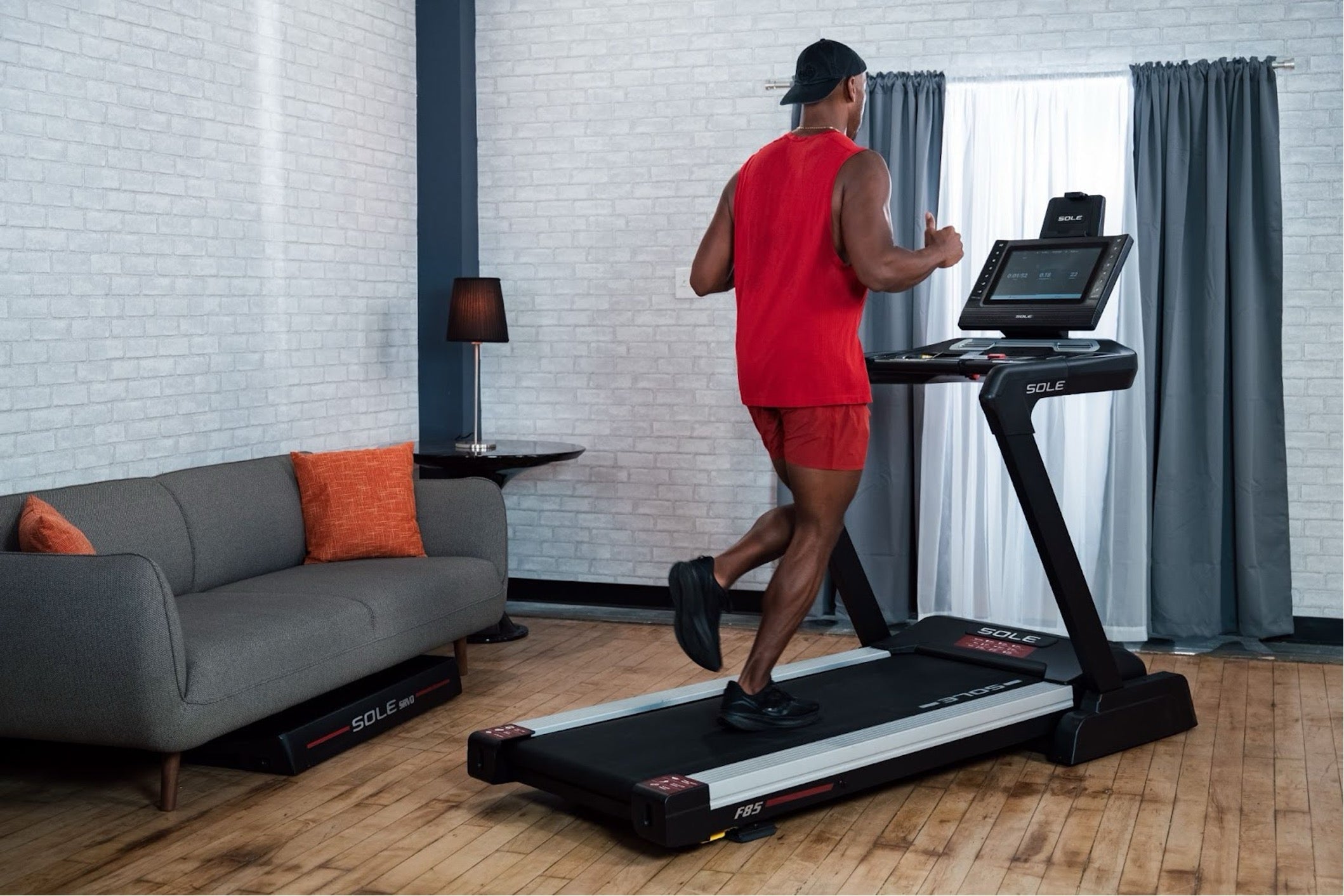Key Takeaways
- Running barefoot on a treadmill can improve balance and strengthen foot muscles.
- It promotes better running form by encouraging a forefoot strike.
- Gradually transitioning to barefoot running can help prevent injuries.
- Be cautious of potential risks like blisters and joint impact.
- The SOLE TT8 Treadmill features a cushioned 2-ply belt designed to reduce impact, making it ideal for barefoot running.
Barefoot Treadmill Running
Have you ever wondered why some people choose to run without shoes? Barefoot treadmill running is a practice rooted in the desire for a more natural running form and the potential to improve your overall fitness.
Potential Benefits
Improved Balance
When you run barefoot, your body naturally adjusts to maintain balance. This adjustment engages smaller muscles in your feet and ankles, which are often neglected when wearing shoes. By strengthening these muscles, you improve your balance and stability, which is beneficial for overall athletic performance.
Think of it like this: when you remove the cushioning and support of a shoe, your foot has to work harder to stabilize itself. This extra effort can lead to better proprioception, which is your body's ability to sense movement and position. It's like giving your feet a workout of their own!
Strengthened Foot Muscles
Running without shoes can also lead to stronger foot muscles. Without the artificial support of a shoe, your foot's intrinsic muscles have to work harder. Over time, this can lead to increased strength and resilience in your feet.
Besides that, stronger foot muscles can help prevent common running injuries, such as plantar fasciitis and shin splints. When your foot muscles are robust, they can absorb more shock and reduce the strain on your joints.
Improved Comfort
Running barefoot on a treadmill can also enhance comfort. Without shoes, you experience a more natural feel on the treadmill surface, free from the constraints of shoe materials. This can lead to reduced friction, minimizing the risk of blisters and discomfort.
Beyond that, going barefoot may improve circulation in your feet. Without tight or restrictive footwear, blood flow can increase, helping to keep your feet warm and reducing fatigue during longer runs.
Potential Risks and Considerations
Risk of Blisters
Blisters are a common concern for those venturing into barefoot running. Without the protective layer of a shoe, your feet are directly in contact with the treadmill surface. This can lead to friction, especially if you're not used to it, resulting in painful blisters.
To prevent blisters, start slowly and allow your skin to adapt to the new conditions. Consider applying a lubricant or wearing thin socks initially to reduce friction. As your feet become accustomed to the treadmill surface, the risk of blisters will decrease.
Impact on Joints
Running barefoot changes your foot strike, often shifting from a heel strike to a forefoot strike. This adjustment can alter the way forces are distributed across your joints.
While this can potentially reduce impact on your knees, it may increase stress on your calves and Achilles tendon. It's essential to pay attention to your body's signals and adjust your running technique accordingly.
To minimize joint impact, focus on maintaining a short stride and landing softly. This can help distribute forces more evenly and reduce the risk of injury. Additionally, incorporating strength training exercises for your calves and ankles can support this transition.
Hygiene Concerns
Without shoes, your feet are in direct contact with the treadmill surface, which can harbor bacteria and fungi. This increases the risk of infections, especially if you have cuts or blisters.
To maintain good hygiene, clean the treadmill surface regularly and ensure your feet are clean before and after your workout. If you're using a public treadmill, it's wise to bring disinfectant wipes to sanitize the surface before use.
The SOLE F80 Treadmill has a powerful motor, a 12 mph top speed, and a cushioned deck for reduced impact.
Strategies for Safe Barefoot Treadmill Running
Start Gradually
Transitioning to barefoot running should be a gradual process. Your feet need time to adapt to the new conditions, so begin with short sessions and gradually increase the duration as your comfort and confidence grow.
Initially, consider alternating between barefoot and shod runs. This allows your feet to adapt without overwhelming them. Listen to your body and rest if you experience discomfort or pain.
Focus on Form
Without the support of shoes, your running technique plays an important role in preventing injuries. Focus on maintaining a slight forward lean, landing softly, and keeping a short stride.
Engage your core and maintain an upright posture to support your body's natural alignment. Pay attention to your foot strike and aim for a midfoot or forefoot landing. This can help reduce impact and promote a more efficient running style.
Choose the Right Treadmill
Not all treadmills are suitable for barefoot running. When selecting a treadmill, consider a treadmill with a smooth, cushioned surface to minimize friction and impact. Some treadmills are designed specifically for barefoot running, offering additional features like shock absorption.
If you're using a home treadmill, ensure it's well-maintained and free of debris that could cause injury. Regularly inspect the treadmill belt for wear and tear, and address any issues promptly.
Build an Effective Workout Routine With SOLE Treadmills
Barefoot running on a treadmill strengthens the muscles in your feet, which can improve overall performance and reduce the risk of injury.
-
SOLE F80 for Speed & Endurance – With a powerful motor and a top speed of 12 mph, the SOLE F80 is perfect for interval and endurance training.
-
SOLE F85 for High-Tech Training – Featuring a 10.1" touchscreen and Bluetooth connectivity, the SOLE F85 enhances workouts with interactive programs and entertainment options.
-
SOLE TT8 for Outdoor Simulation – The TT8 offers incline and decline settings, mimicking real-world terrain for a more challenging and engaging running experience.
- SOLE+ App for Guided Workouts – Access free fitness classes and track progress with the SOLE+ app, keeping you motivated and on track with your fitness goals.
Ready to take your workouts to a whole new level? Equip yourself with the right SOLE treadmill and make strides in your fitness!
Frequently Asked Questions
Is barefoot running on a treadmill safe?
Yes, barefoot running on a treadmill can be safe when done correctly.
How should I start with barefoot treadmill running?
Begin by incorporating short barefoot running sessions into your routine. Start with just a few minutes and gradually increase the duration as your feet become accustomed to the treadmill surface.
Does barefoot running improve running form?
Yes, barefoot running can improve running form by encouraging a forefoot or midfoot strike. This adjustment can lead to a more efficient running style and reduce the risk of impact-related injuries.
What are some good treadmills for barefoot running?
For barefoot running, the SOLE TT8 Treadmill is an excellent choice owing to its cushioned 2-ply belt that reduces joint impact while providing a natural feel. Other SOLE models like the F85 also offer smooth, shock-absorbing decks for a comfortable running experience.




Leave a comment
This site is protected by hCaptcha and the hCaptcha Privacy Policy and Terms of Service apply.